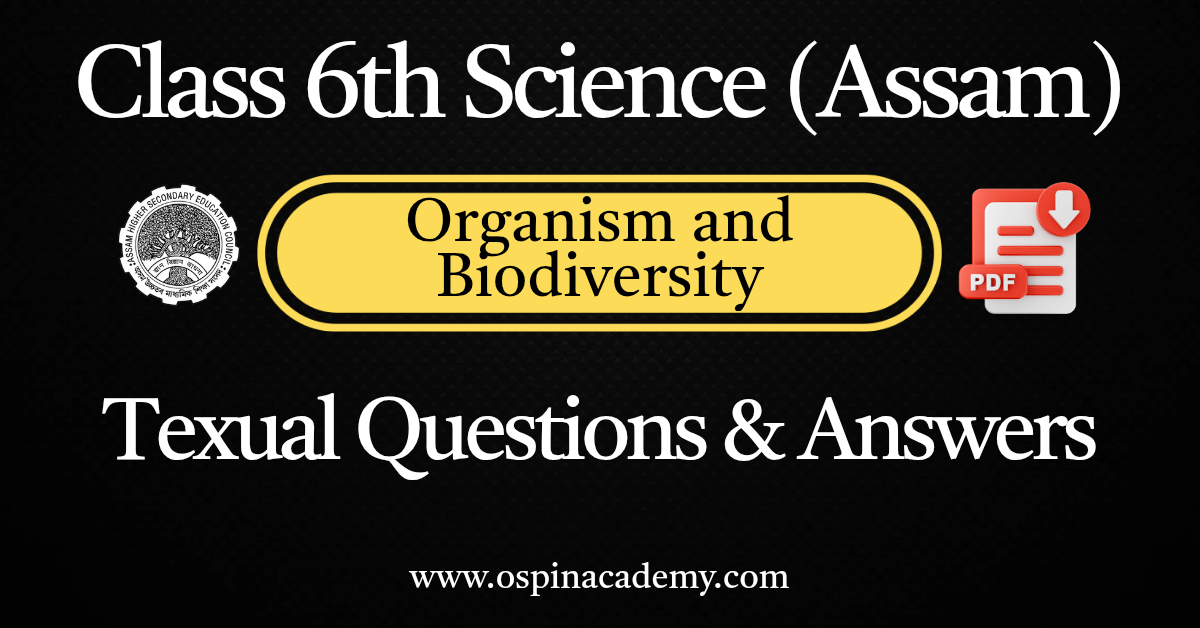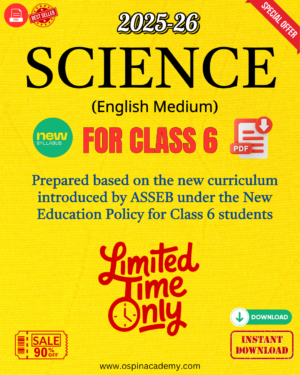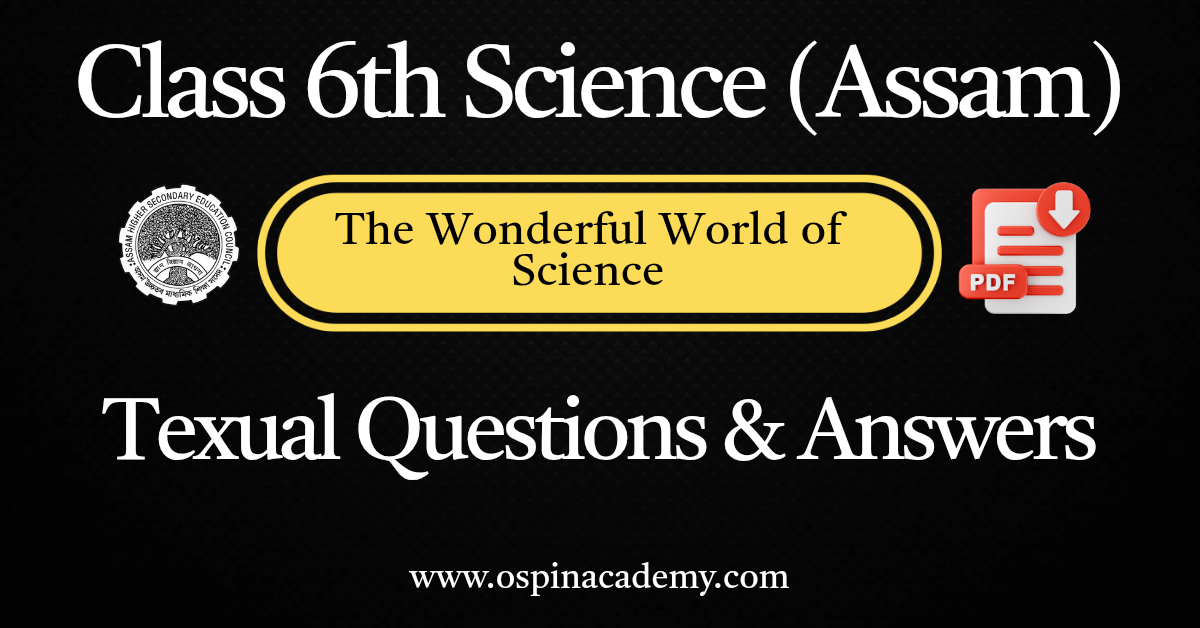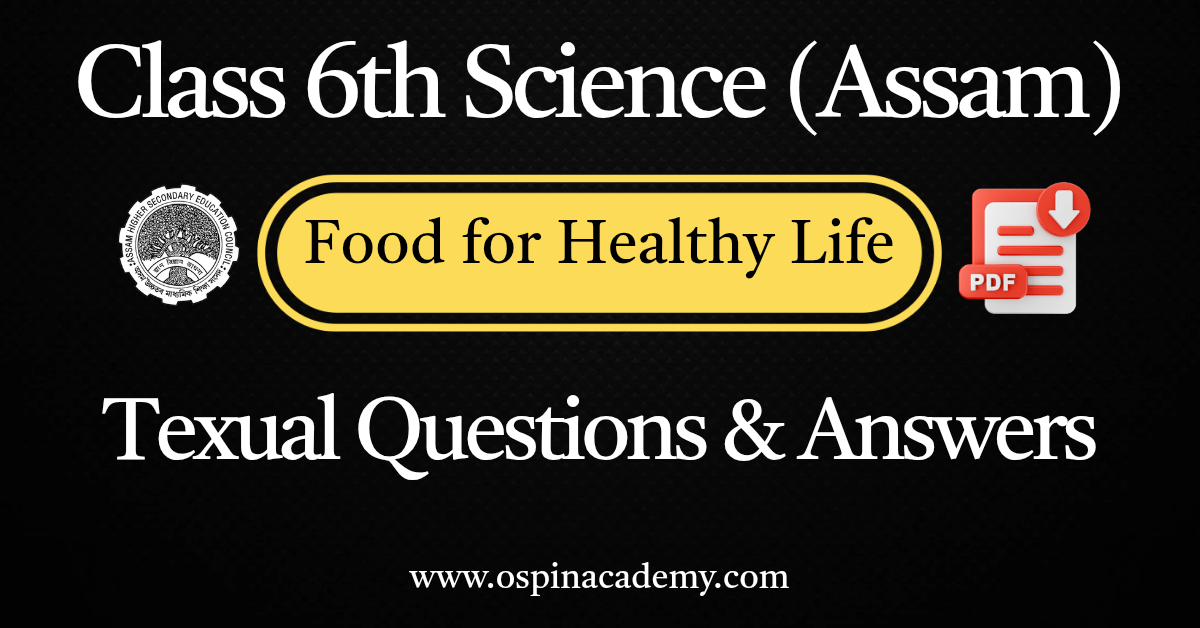Explore the vibrant world of living things with Class 6 *Amar Bigyan* Chapter 2 – Organisms and Biodiversity, designed as per the new SCERT Assam syllabus 2025-26 for English Medium students. This chapter introduces students to the diversity of life on Earth, covering different types of organisms, their characteristics, and the importance of biodiversity. Aligned with the updated Assam board curriculum, this chapter fosters an appreciation for the interconnectedness of living organisms and their environments, encouraging young learners to understand the natural world.
The new syllabus 2025-26 emphasizes experiential learning and environmental awareness, making this chapter a key component of the Class 6 curriculum. Students will learn about the classification of organisms, their habitats, and the role biodiversity plays in maintaining ecological balance. From plants and animals to microorganisms, this chapter highlights the variety of life forms and their significance. Scan the QR code L6S7V6 to access interactive resources and deepen your understanding of biodiversity as per the SCERT Assam English Medium curriculum.
✅ What You’ll Learn in Chapter 2:
- Definition and importance of biodiversity in the new SCERT Assam syllabus
- Classification of organisms: plants, animals, and microorganisms
- Characteristics of different types of organisms and their adaptations
- Role of biodiversity in maintaining ecological balance
- Habitats and their influence on organism survival
- Introduction to food chains and their connection to biodiversity
- Conservation of biodiversity and its relevance to sustainability
- Inquiry-based learning activities to explore organisms, as per the 2025-26 curriculum
- Real-world examples of biodiversity in Assam and beyond
🎯 Why Choose Ospin Academy for Class 6 Amar Bigyan?
- 100% aligned with the SCERT Assam English Medium new syllabus 2025-26
- Simplified explanations, accurate Q&A, and exam-focused notes
- Ideal for Assam board students preparing for the updated curriculum
- Engaging video lessons available on Ospin Academy’s YouTube channel
- Downloadable resources, including chapter notes, MCQs, and QR code L6S7V6 content
- Emphasis on conceptual clarity and practical applications as per new syllabus guidelines
With the new SCERT Assam syllabus 2025-26, learning about organisms and biodiversity is both educational and inspiring! Ospin Academy’s resources make Chapter 2 – Organisms and Biodiversity engaging, accessible, and easy to master. Use the QR code L6S7V6 to unlock additional study materials and join Ospin Academy to excel in the updated Class 6 Amar Bigyan curriculum while building a strong foundation in environmental science!
SCERT Assam Class 6 Science (Amar Bijnan) – English Medium Chapter-wise Solutions PDF
Special Combo Offer!
(For SCERT Assam Class 6, 2025)
Get complete chapter-wise Science (Amar Bijnan) solutions in English Medium prepared by expert teachers.
Covers all textbook exercises, key concepts, definitions, and diagrams as per the latest SCERT Assam syllabus.
Ideal for concept clarity, homework assistance, and exam preparation.
![]()
Class 6th Science
Chapter – 2 Ospin Academy
ORGANISM AND BIODIVERSITY
Exercise
Q.1. Darken the circle of correct answer:
(i) butterflies help plants in
(a) adaptation
(b) Preparation of food
(c) Reproduction
(d) Breathing.
Answer: (c)
(ii) Pomegranate plant is a
(a) Tree
(b) Shrub
(c) Herb
(d) Climber
Answer:(b)
(iii) Which of the following is not an aquatic plant?
(a) Lotus
(b) Jasmine
(c) Water lettuce
(d) Water lily
Answer: (b)
(iv) The wings of birds are
(a) Modification of feather
(b) Modification of fore limb
(c) Modification of hind limb
(d) Both (a) and (b)
Answer: (b)
(v) What is the function of long fur in the body of animals living in colder regions?
(a) It protects the body from heat.
(b) It protects the body from rain.
(c) It protects the body from cold.
(d) It protects the body from injury.
Answer:(c)
Q.2. Fill in the blanks
(i) Cotyledon is present within the_______.
Answer: Seeds
(ii) Net like venation is a character of_____.plant.
Answer: dicotyledons
(ii) Camels store_______.in its hump.
Answer: food
(iv) The trees growing in mountain have____. like shape.
Answer: cone
(v) Hollow bone is a characterof_____
Answer: birds
Q.3. Give sort answers
Q. (i) What is called habitat?
Answer: The place where an organism naturally lives, is called habitat of the organism.
Q. (ii) What is biodiversity?
Answer: There are various types of organisms in our environment and all these organisms are referred to as biodiversity.
Q. (iii) How cacti are adapted to live in desert?
Answer: The cactus is a desert plant, with spiny structure their spines are modified leaves. Leaves are modified to thorns in order to re-duce water loss through evaporation.
Q.(iv) Write three common characteristic features of living be-ings.
Answer: The living organisms perform life processes themself to remain alive.
(i) Organism have a specific life span and it differs from one organism to another.
(ii) The ability to growth & development, reproduce
(iii) They can move from one place to other.
Q. (v) Give three examples of plants having leaves with parallel venation.
Answer: Three examples of plants having leaves with parallel venation are –
(i) banana leaf (ii) leaf of coconut tree (iii) leaf of rice plant
Q. (vi) Write significance of biodiversity
Answer: We have a great relationship with the organism found in our surroundings, like relationship between birds and crops, butter-fly with flower, helps in reproduction. The birds make their nest on the big trees and take their food from the tree. Biodiversity maintaining the balance of the ecosystem. Recycling and storage of nutrients. Forest provide shelter to the animals. plants in turn provide food to animals. They provide oxygen for breathing. Animal release carbon dioxide gas during exhalation. This gas isused by plants for synthesis of food. Some tribal folk live in bor-dering places of forests. Their tradition and belief have link is intimately linked with biodiversity.
Q. (vii) “Birds are important component of biodiversity” Justify.
Answer: ‘Birds are important component of biodiversity because birds play an importance rolę in biodiversity. Bird have a good rela-tionship with crops. Birds consume crops as food while others help crops by eating the insects that cause damage to them. But-terflies feed on the neetor of flowers and as a result they help in plant reproduction. Birds build their nest on these trees to live. Insects on trees are eaten by birds. As a result the number of these organisms remain balanced. Birds help in the extension of forests in this way so birds are important component of biodiversity.
Q.4. Write true or false
(i) All insects are harmful for us.
(ii) Birds help in expansion of forest
(iii) There is ro interrelationship among all organism of the environment.
(iv) The loss of bidiversity will affect our environment?
(v) No organism can survive in extreme cold regions.
Answer:
(i) false
(ii) True
(iii) false
(iv) True
(v) false
Additional question answers
Q. 1. Name some animals those found in Kaziranga National Park.
Answer: One horned rhino, deer, wild buffalo, tiger, wild elephant, and monkey etc.
Q.2. What are climbers?
Answer: Some plants climb on some support. These are called climbers. Example: Betel leaf, bottle gourd.
Q.3. What are shrub?
Answer: In some plants the stem is hard but not thick. The leaves and branches of these plants are not very much above the ground. These are called shrubs.
Q.4. What are taproot system?
Answer: Some plants have one main root from which some secondary roots originate. This type of arrangement of roots is called tap-root system.
Q.5. What are monocotyledons and dicotyledon?
Answer: Plants, whose seeds have only one cotyledon such seeds arecalled monocotyledons. Example Maize plants whose seeds have two cotyledons are called dicotyledons. Example-chickpea.
Q. 6. Who was Dr. Robin Banerjee?
Answer: Dr Bobin Banerjee was a renowned Indian naturalist, documen-tary film maker and environmentalist.
Q.7. What are amphibians?
Answer: Some animals can live in water as well as on land. These are called amphibians. Ex: frogs.
Class 6 Amar Bigyan Chapter 2 – Organisms and Biodiversity FAQs
Get Free NCERT PDFs
If you want to download free PDFs of any chapter, click the link below and join our WhatsApp group:




